Confronting the Modern Era
Racial Segregation
The end of the Civil War had accomplished at least one thing important to black people–African Americans were no longer slaves.
Congress passed three amendments to the constitution to ensure that black people were full citizens.
The 13th amendment abolished slavery; the 14th gave them citizenship; and the 15th amendment gave black men the right to vote. (Women, black or white, couldn’t vote at this time.)
In addition, Congress passed a civil rights act in 1875. This law said that blacks could not be discriminated against in hotels, trains and other public areas. But rulings by the U.S. Supreme Court allowed Congress and state legislatures to change these laws. A series of laws were passed by Tennessee and other state legislatures that required segregation in public schools, restrooms, restaurants, train passenger cars, parks, and other public accommodations.
In addition to laws restricting the rights of African Americans, there was a social pressure to keep “blacks in their place.” Blacks were considered and treated like second-class citizens. White people spoke of “white supremacy.”
Any black person who was not behaving in a manner acceptable to Jim Crow society could be threatened with violence or death. Lynchings (hanging someone by their neck from a tree or pole until they died) became the ultimate method of control.
Some African Americans fought back. Ida B. Wells, from Memphis, wrote about the injustices of lynching until she was forced to leave town because of death threats. In the early 1900s Richard Boyd and other African Americans in Nashville protested segregated street cars. Similar movements took place in Knoxville, Memphis and Chattanooga.
But social customs and the laws of this time did not change. It took the Supreme Court until 1954 to rule against the so-called separate, but equal, school systems. Another Civil Rights Act wasn’t passed by Congress until 1964.
Picture Credits:
- Photograph showing a Ku Klux Klan presentation. The photo features a woman and children dressed in Ku Klux Klan costumes. They are standing on a stage. The flag behind the group reads, “Chattanooga Klan No. 48, Realm of Tennessee – Invisible Empire Knights of the Ku Klux Klan” Cleveland Public Library.
- Photograph showing John H. Williams and family. This photo was taken in Davidson County on the front porch on the Williams’ home. Mr. Williams is pictured along with his wife, his two children, and a dog. A young African American woman, who may have served as a nanny or housekeeper, is also pictured. Tennessee State Library and Archives.
- Photograph of an African American cowboy. This photo was created sometime between 1890 and 1920. It shows the cowboy posed beside a horse. Denver Public Library.
- Photograph showing a chain gang. It shows African American men working on a road. This photo was published in the book, Following the color line: an account of Negro citizenship in the American democracy, by Ray Stannard Baker in 1908. New York Public Library.
- Photograph of Alfred Jackson. Jackson was a former slave of President Andrew Jackson. This photo was taken in 1890 when Jackson was about 75 years old. He is shown wearing a suit and tie and holding a walking stick and a straw hat. The Hermitage.
- Photograph of Hannah Jackson. Jackson was a former slave of President Andrew Jackson. This photo was taken in 1880 and shows Jackson wearing a print dress and an apron. She is seated and holding an umbrella. The Hermitage.
- Photograph showing of a family reunion. This photo was taken in August 1929 in Springfield, Tennessee. It features members of the African American families of Bransford, Bowling, Henderson, Kitchens, and Holloway. Tennessee State Library and Archives.
- Photograph showing cotton pickers. This photo was taken in 1915 in Ripley, Tennessee. It shows African American women and an African American man picking cotton. A white man is also shown watching them. Tennessee State Library and Archives.
Confronting the Modern Era >> Racial Segregation >>
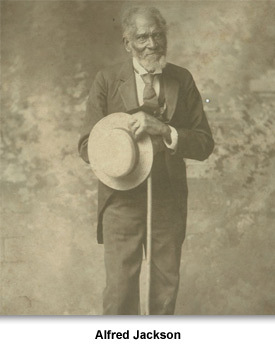
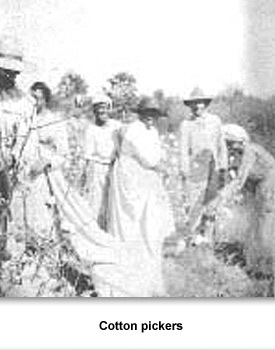
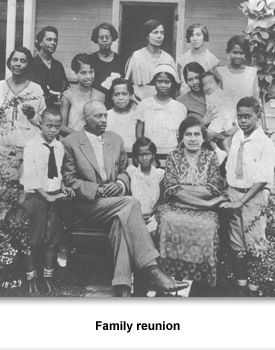
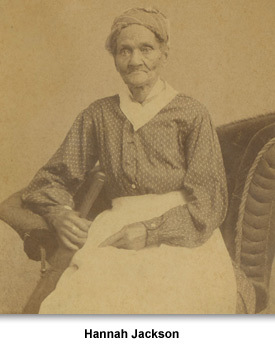
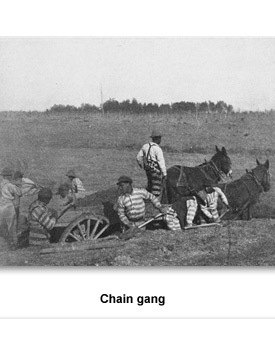
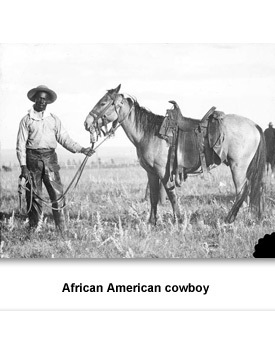
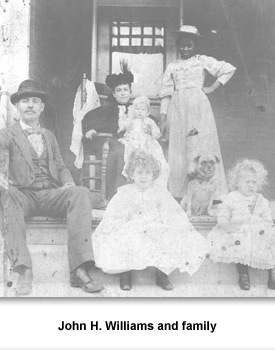
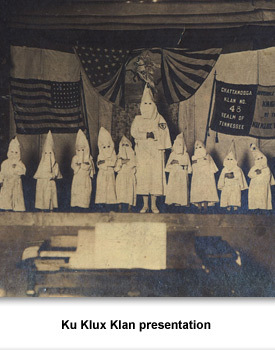
 Sponsored by: National Endowment for the Humanities
Sponsored by: National Endowment for the Humanities